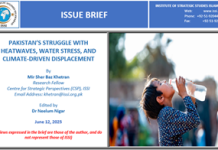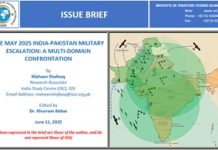The pandemic created severe impediments to economic activity resulting in drastic changes in the livelihoods of people and the situations of food security and nutrition. The food security status in developing and under-developed countries worsened with the progression of the pandemic. According to the World Food Program (WFP), 271.8 million people were acutely food insecure due to the destructive impact of the COVID-19 pandemic across the world. Similarly, around 20%–30% of the population of Pakistan, that is, 40–62 million people, has been suffering from acute food insecurity due to the pandemic, and other socio-economic and environmental/climatic issues.[1]
The COVID‐19 pandemic reached Pakistan at a time when the people of this country had been grappling with various other crises such as prolonged drought, desert locusts (Schistocerca gregaria Forsk.) infestation, severe winter season, escalating economic losses, persistently widespread poverty, and consequent food security challenges. The pandemic impacted the country at the time when Pakistan was going through slow economic growth and high inflation. It is estimated that around 53 million people in Pakistan live below the poverty line. Likewise, 20%–30% of the population in Pakistan is already suffering from food insecurity and the economic experts believe that the number of food-insecure people will rise in Pakistan in 2022 due to the evolving nature of the current pandemic. It has also been reported by the Pakistan Bureau of Statistics that the Consumer Price Index has been increased in Pakistan by 11% between May 2020 and December 2021. Moreover, food inflation has also increased by 13.73% in the rural areas and 10.94% in the urban areas during this pandemic era.[2]















